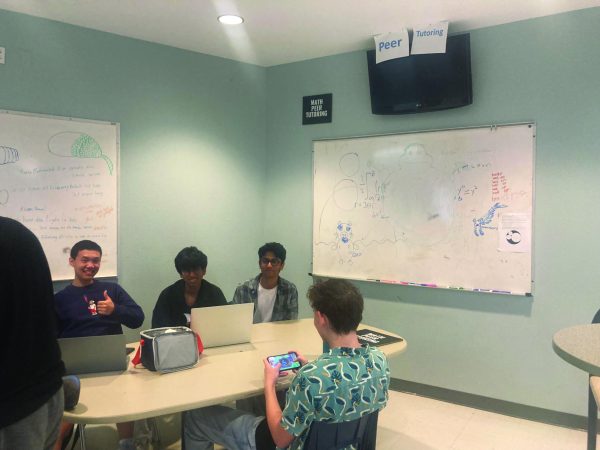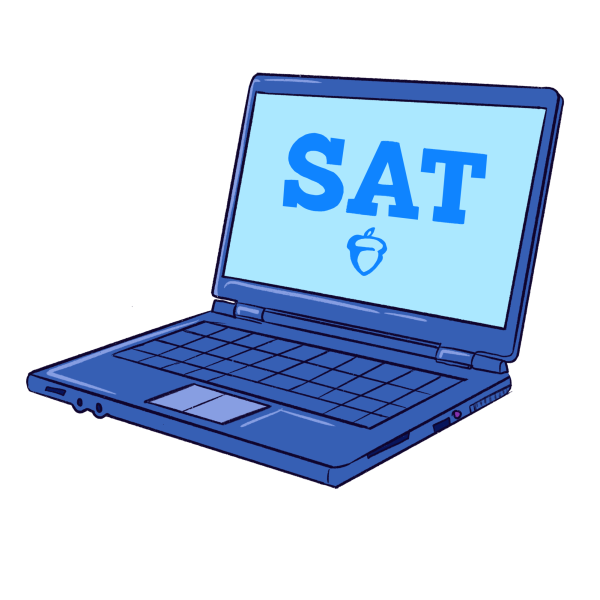A march for our lives
May 1, 2018
On Feb. 14 in Parkland, Florida, 17 students lost their lives at the hands of a former student with an assault rifle. In the wake of the tragedy, Parkland students led a national call for increased gun control measures, focused especially on “common-sense” gun control reform. Cities across the country joined in support for the victims of Parkland in marches known as the March for Our Lives movement.
Seniors Jack Kappelman, Kari Siegenthaler and Conor Heffernan helped organize March for Our Lives: Austin to make their voices heard about their desire for gun control reform.
“I remember reading the news following the Parkland shooting, and just being so scared,” Siegenthaler said. “I wanted to make a stand so that horrible atrocities like the Parkland shooting never happened again. But, I wasn’t sure how to make my voice heard, or how to showcase my opinion. So when Conor texted me the Friday following the shooting about planning a demonstration to protest gun violence in schools, I immediately responded with ‘Great idea! How do we get this started? Who do we need to reach out to? What’s our next step?’”
The three students were the lead organizers of the march. In order to get the word out and begin preparation, they contacted media sources and public representatives and ensured that they could legally protest by communicating with Austin Police Department and gaining a permit for protesting.
“We wanted to get the word out, so we tried to have a big social media footprint,” Heffernan said. “We reached out to Beto O’Rourke, Joaquin Castro, Lloyd Doggett, Gina Hinojosa, and Kirk Watson. Then we sent out a Facebook message to all of our followers and we listed state officials and representatives for them to contact. The congress people were very nice and their staff was very nice and made sure to get back to me as quickly as they could even if it was just to say that they couldn’t attend.”
With the foundation for the march laid, they joined the March for Our Lives movement to gain credibility and become involved with the national effort. In a little under a day, the march’s Facebook page had nearly a thousand people who had shown interest in the event.
“From there, we focused on creating a timeline for the event, beginning with reaching out to politicians and students to speak,” Siegenthaler said. “Wanting to ensure that we had representation from all around Austin, we reached out to high schools, creating a group of ‘student ambassadors’ for the event.”
It was important to the organizers that every marcher felt safe and understood the peaceful intent of the march. Siegenthaler focused her efforts on safety and volunteer coordination. She helped to create training on de-escalation practices that could possible arise between people of different political views, in addition to dealing with miscellaneous maintenance tasks.
“I designed the T-shirt that we sold to raise money for the march; I organized chant leaders and megaphones; and ultimately I constantly responded to emails, answered people’s questions, and organized the movement,” Siegenthaler said. “As one of the primary organizers, the weeks leading up to the march were filled with media interviews, speaker requests and endless task lists. Most of my tasks consisted simply of communicating with volunteers and attendees, attending meetings and ensuring that everything would go according to plan on the day of the March.”
However, the organizers were prepared for potential concerns during the march, and expected a counterprotester presence. The march was an overall success, according to organizers.
“There wasn’t a lot of unexpected stuff,” Heffernan said. “I personally expected there to be a counterprotester presence, but at least the presence was small. That was a pleasant surprise. Aside from that there was nothing really unexpected. The general response was overwhelmingly positive.”
Junior Willa Scanlon heard about March for Our Lives: Austin through her friends at school and decided to participate to express her concerns as a current student and a future voter.
“Frankly, it is incomprehensible that people are able to purchase assault weapons,” Scanlon said. “I don’t think that makes sense as a nation, I don’t think that makes sense as a home for future generations, and I think we are at a crossroads for future generations. I felt like the community has been really behind something for the first time which can be kind of difficult in an era where people don’t really seem to be connected and just kind of seem to be angry.”
Both teachers and students participated in the march, including English teacher Mo Harry. Harry, who has been involved in a variety of demonstrative marches, participated in March for our Lives: Austin because he believes it is his duty to express his opinions on gun control and violence.
“If you’re physically able to demonstrate, or physically able to be in the streets about an issue that’s important to you, then you should be,” Harry said. “If you’re not, the powers that be realize you don’t take it seriously enough to try to change it.”
Harry said seeing the passionate demands for change after the Parkland shooting changed his views on gun control. He felt more connected to the events in Parkland because of his occupation and being surrounded by young people everyday.
“I used to be pretty ambivalent about that particular issue until this last shooting in Parkland,” Harry said. “I was really moved by the students there and the students here at LASA who were speaking about it and really encouraged by reasonable demands for something better with gun control and encouraged by seeing Conor Heffernan getting up to speak in front of thousands of people very passionately about the issue.”
The rally at the capitol was kicked off with speeches from Heffernan and other supporters of the event, including Austinite actor Matthew McConaughey. Heffernan wanted to leave others inspired and spread a positive message.
“I wanted to get across how proud I was to be a Texan and how proud I was that this had gone well and that we were demonstrating to all of our elected representatives,” Heffernan said. “But, this march was not nearly the last thing that we would have to do. There is work that still needs to be done.”
Kappelman is optimistic about the march’s impact. He hopes that this movement will empower others to speak out about what they believe in and encourage lawmakers to make progress.
“I hope that the march, as well as other grassroots movements, will help galvanize legislators to take real, substantive action,” Kappelman said.
Although no change in state or national legislature has yet been made, sophomore Sophia Takvorian felt as if the march heavily impacted those who attended and raised appropriate awareness for the cause.
“The atmosphere, in one word, was revolutionary,” Takvorian said. “Everyone was fighting for the same thing— it gives me chills to think back to it. The crowds were massive, but they were all so peaceful and passionate. I felt so encouraged and empowered and invigorated being surrounded by people who supported each other’s beliefs and ideas.”
Harry credits part of the march’s success to the optimistic outlook and determination of today’s youth. He said their enthusiasm added a needed element to making an effective movement.
“I do think the march was different because students organized it,” Harry said. “I think it brought more enthusiasm and energy to it, both for the partners that got involved but also just for the general people of Austin that were inspired to come out, including me, because young people have the energy and have the vision to really want something different. It takes a fresh, young perspective to more critically see the problem.”
Heffernan said his belief in a solution to current issues surrounding gun control are due to his age, relative to those who have faced these issues for longer, and his optimism.
“I’m not filled with the same cynicism as someone who has been around watching this issue for 40 or 50 years,” Heffernan said. “I’m not filled with that negativity.”
Many students, including Scanlon and Takvorian, used their social media presence to make their voices heard about the marches and their hope for change. According to Scanlon, the progress made in this issue can be attributed to the current generation of students and their social media proficiency.
“I think our generation has an incredible amount of power because we are on social media and we talk,” Scanlon said. “The generation before us didn’t get stuff done in the way that they needed to, but I think our generation has done an incredible job of organizing, planning, and demonstrating. I think this demonstration is just a testament to how hard our generation is pushing for things and how successful we can be at it.”
Even after the march’s success, Takvorian believes more legislative change needs to occur in order to have a safe, stable environment.
“Every day my life is in danger just simply sitting in my home, in the classroom, or walking down the street, because in this country, it is easier for me to get a semi-automatic weapon than it is for me to order a drink at a bar,” Takvorian said. “We can’t continue to live with this threat looming over our heads.”










